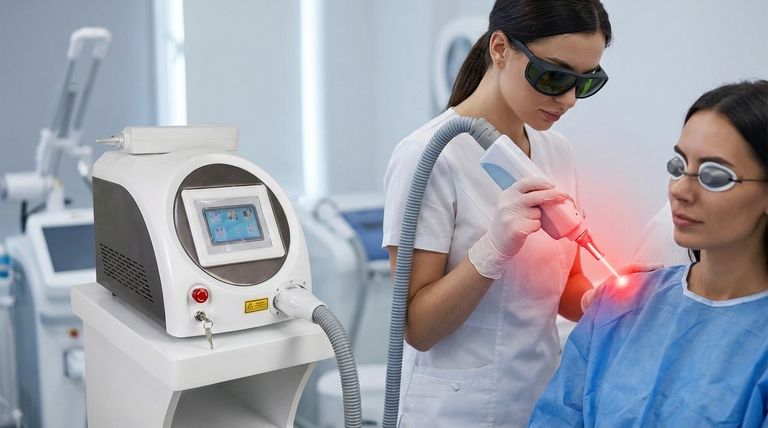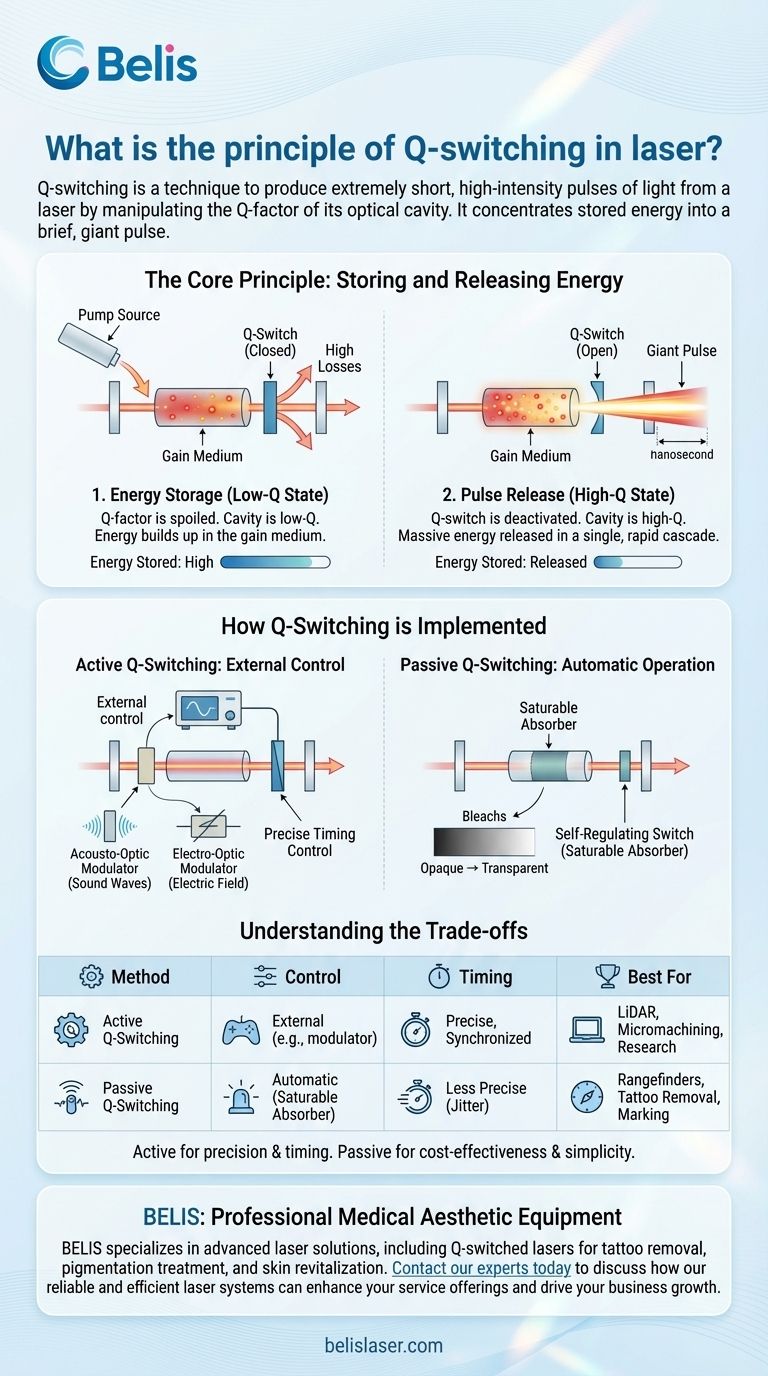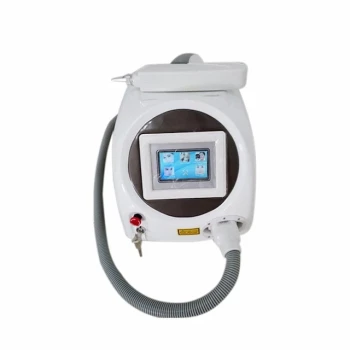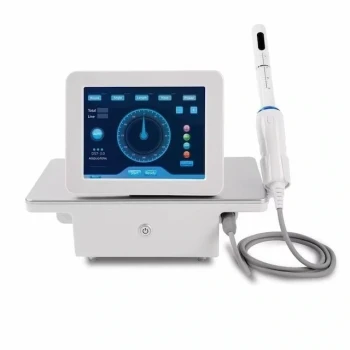In principle, Q-switching is a technique used to produce extremely short, high-intensity pulses of light from a laser. It works by temporarily preventing the laser from operating while energy is pumped into its gain medium, and then suddenly allowing all that stored energy to be released in a single, powerful burst. This is achieved by manipulating the "Quality Factor" (Q-factor) of the laser's optical cavity.
The core concept behind Q-switching is not about creating more energy, but about controlling its release. By first building up a massive amount of stored energy in the laser medium and then abruptly opening the floodgates, it concentrates the laser's power into a brief, "giant" pulse.

The Core Principle: Storing and Releasing Energy
To understand Q-switching, you must first understand the "Q-factor" of a laser's resonator cavity.
Understanding the "Q" Factor
The Q-factor, or Quality Factor, is a measure of the energy loss within the laser's optical cavity.
A high Q-factor signifies very low energy losses. In this state, the light can oscillate and amplify efficiently, allowing the laser to operate.
A low Q-factor signifies very high energy losses. The losses are so great that lasing is suppressed, even while the laser's gain medium is being actively pumped with energy.
The Two-Step Process
Q-switching transforms a continuous energy input into a pulsed output through a deliberate two-step cycle.
-
Energy Storage (Low-Q State): An optical switch inside the laser cavity is activated, introducing high losses and "spoiling" the Q-factor. While the cavity is in this low-Q state, the pump source continuously pours energy into the gain medium, building up an exceptionally large population inversion (stored energy).
-
Pulse Release (High-Q State): The switch is suddenly deactivated, instantly removing the losses and restoring the cavity to a high-Q state. With the suppression lifted, the massive amount of stored energy is released in a single, rapid cascade, forming a pulse with extremely high peak power and a very short duration (typically nanoseconds).
How Q-Switching is Implemented
There are two primary methods for changing the cavity's Q-factor: active and passive.
Active Q-Switching: External Control
In active Q-switching, an external device controlled by a power source acts as the switch. This allows for precise, external control over the pulse timing. Common methods include:
- Acousto-Optic Modulators: Use sound waves to diffract the laser beam out of the cavity, creating loss. Turning the sound wave off restores the Q-factor.
- Electro-Optic Modulators (Pockels Cells): Use an electric field to rotate the polarization of the light, causing it to be rejected by a polarizer in the cavity. Removing the voltage restores the Q-factor.
Passive Q-Switching: Automatic Operation
In passive Q-switching, a special material known as a saturable absorber is placed inside the laser cavity. This material acts as a self-regulating switch.
Initially, the absorber is opaque and blocks light, keeping the cavity in a low-Q state. As the gain medium is pumped, the intensity of spontaneous light builds until it is strong enough to "bleach" or saturate the absorber, causing it to suddenly become transparent. This transparency rapidly switches the cavity to a high-Q state, triggering the giant pulse.
Understanding the Trade-offs
The choice between active and passive Q-switching depends entirely on the application's requirements for control and cost.
Active Q-Switching: Precision vs. Complexity
The primary advantage of active Q-switching is control. The timing of each pulse can be precisely synchronized with external events. The main disadvantages are higher cost, increased system complexity, and a larger physical footprint.
Passive Q-Switching: Simplicity vs. Jitter
The key benefit of passive Q-switching is its simplicity. It requires no external power or control electronics, making the laser system smaller, more robust, and less expensive. The main drawback is a lack of precise timing control, leading to slight variations in the time between pulses, known as timing jitter.
Making the Right Choice for Your Application
Selecting the correct Q-switching method is a critical design decision based on performance needs and budget constraints.
- If your primary focus is precise timing and synchronization: Active Q-switching is the definitive choice for applications like LiDAR, industrial micromachining, and scientific research.
- If your primary focus is cost-effectiveness, compactness, and simplicity: Passive Q-switching is the ideal solution for devices like handheld laser rangefinders, medical lasers for tattoo removal, and compact materials marking systems.
Ultimately, Q-switching is a powerful technique that fundamentally alters a laser's output, enabling the creation of concentrated bursts of immense peak power for a vast range of applications.
Summary Table:
| Method | Control | Timing | Best For |
|---|---|---|---|
| Active Q-Switching | External (e.g., modulator) | Precise, Synchronized | LiDAR, Micromachining, Research |
| Passive Q-Switching | Automatic (Saturable Absorber) | Less Precise (Jitter) | Rangefinders, Tattoo Removal, Marking |
Ready to integrate high-power Q-switched laser technology into your practice?
BELIS specializes in professional medical aesthetic equipment, providing advanced laser solutions for clinics and premium beauty salons. Our Q-switched lasers deliver the precise, high-intensity pulses needed for effective tattoo removal, pigmentation treatment, and skin revitalization.
Contact our experts today to discuss how our reliable and efficient laser systems can enhance your service offerings and drive your business growth.
Visual Guide

Related Products
- Q Switch Nd Yag Laser Machine Tattoo Removal Nd Yag Machine
- Clinic Use IPL and SHR Hair Removal Machine with Nd Yag Laser Tattoo Removal
- 7D 12D 4D HIFU Machine Device
- Clinic Diode Laser Hair Removal Machine with SHR and Trilaser Technology
- 22D HIFU Machine Device Facial Machine
People Also Ask
- How much does a laser tattoo removal machine cost? Choose the Right Tech for Your Clinic
- What are Q-switched lasers commonly used for? Remove Tattoos & Pigment with Precision
- How long does it take to recover from Nd:YAG laser treatment? A Timeline for Every Procedure
- What are the disadvantages of Q switching? Trade-offs in Pulse Control, Cost, and Beam Quality
- Is Q-Switch laser safe for skin? Achieve Precise, Non-Invasive Skin Rejuvenation Safely



















